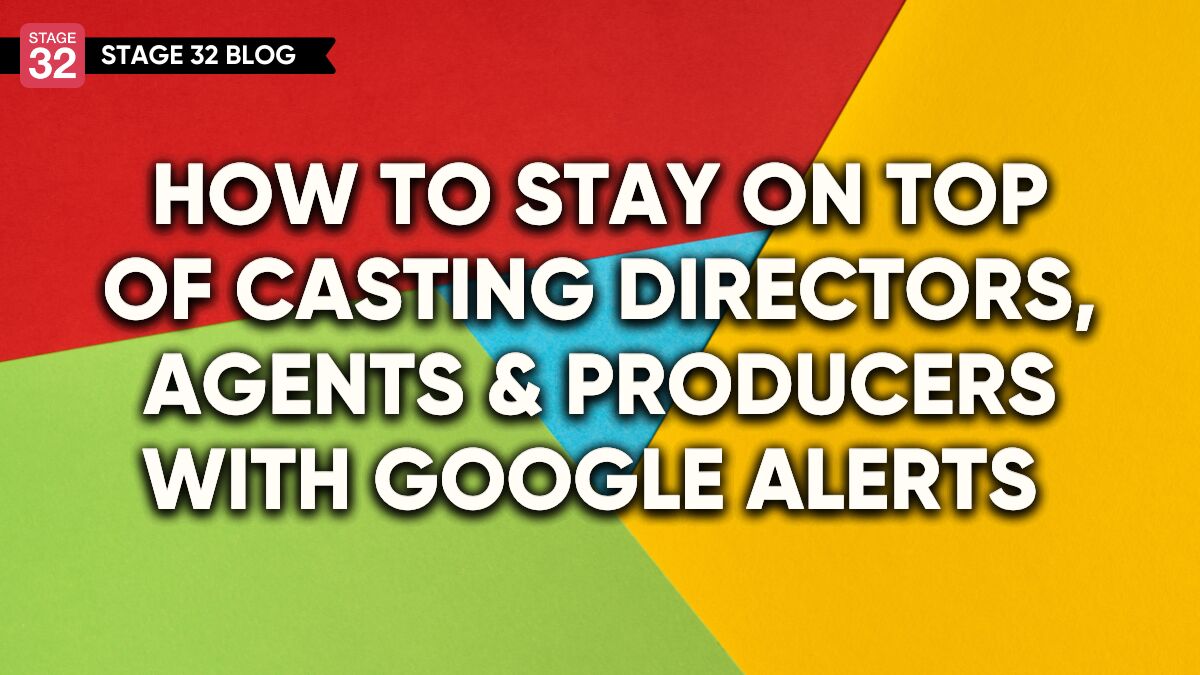10 Tips to Nail Your Next TV Pitch
The writer’s job is never easy, in part because it’s secretly more than one job: it’s three. You need to be a talented writer on the page, a collaborator and idea generator in the room, and a riveting salesperson in a pitch.
Pitches can make or break a career – they can be the tool that opens doors or leaves your ideas gathering dust in a pile. So how do you take all the work you’ve done on your project, and present it in a way that will get someone to buy it?
1. Be A Great Storyteller
From the moment you walk into the room or sign into Zoom, you should be telling your story – both your personal one and the show that you are pitching.
Executives are busy, they have a lot going on. The best way to stand out is to find a way to connect to them emotionally. If you make them feel something while listening to your pitch, they will remember you, and they’ll be much more likely to want to work with you.
2. Make Them See You As A Leader
TV costs a lot of money to make. Every time a Network picks up a show to series, they are making a multi-million dollar gamble. You want to prove to them that their investment in you and your show will pay off.
How do you do that? Be confident and passionate about your project. This might seem like a no-brainer, but when you show executives how much you care about the material, you’re proving to them that there will be an audience out there who cares as much as you do.
One of the best ways to demonstrate this is attention to detail. You need to know who the show is for (i.e. how it will make money) where and when it is set (i.e. how much it will cost) and the scope of the show (i.e. how many seasons, length & number of episodes, network or streaming, etc.) By demonstrating your passion for the project and your understanding of the big picture of making it, you are showing potential buyers that their investment in your creative vision will be safe in your hands.
3. Be Yourself
Yes, you are trying to make a good impression. But that does not mean trying to be someone you are not. If you’re not a charismatic public speaker, that’s okay! Don’t try to fake it, just be yourself, and your enthusiasm for the material will shine through.
If you can memorize your pitch and it flows naturally, great! If you need to read off of a written pitch document, totally fine! Find a way to present your ideas that is authentic to you and your style. If you are uncomfortable in a pitch, they’ll be left wondering how you’d handle a whole show.
4. Answer These Questions: Why, Where, When, Who, & What?
In any pitch, you want to be able to answer these questions to get all the important information across. A typical professional TV pitch will usually be about 20-30 minutes long with questions afterward. When you are writing out your pitch document, in order to hit this timeframe try to keep the document under 10 pages. Here is the most common structure for a TV Pitch:
- Introduction: This is your hook, whether it’s an anecdote, a fun fact, an exciting scene or moment in the show, or a personal revelation, it’s your moment to grab everyone’s attention and make them lean in. Keep it short, snappy, and relevant.
- Why Me: Your intro should hopefully feed directly into the answer to this question – why are YOU the right person to be telling this story? What about your interests, experience or background is essential to creating THIS show?
- World: This is your chance to introduce us to the world of the show, and to give us a sense of the atmosphere and tone you’re going for. Is this an ensemble comedy set in a contemporary office with a documentary crew following them around? Or perhaps it’s a steamy character-driven fantasy series inspired by British medieval history. What makes the world of your show interesting enough to be the setting for many episodes and seasons of TV? How will that world drive conflict and build character?
- Characters: In TV, characters are king. Your plot won’t matter much if the characters aren’t interesting. It’s the complexity and depth of their relationships that will fuel the entire show and keep viewers coming back for more. This is where you tell us about your series regulars, who are the people we’ll be spending our time with? If it’s an ensemble, pick the 5-6 most important characters who anchor the core cast of the show.
- Pilot & Season 1: Whether or not you have a written script of the Pilot ready to go, this is the time to give us a quick summary of what happens in the Pilot, and then a general overview of where you see the show going in Season 1. If this is a limited series, you’ll want to be a little more detailed in your season overview since it’s the only one.
- Future Seasons: Keep this short and sweet. Execs know that anything you say here is likely to change drastically by the time you get to make the show. However, they do want to see that you have thought through how the show can continue for years to come. You’ll want to offer maybe a paragraph or so of ideas for Season 2, and then very broad strokes for any seasons after that. Don’t get too detailed here, less is more.
- Conclusion: A brief wrap-up to your pitch. This is where you tell them why this show has an audience, what makes it an important story to tell now, how the themes of the show will resonate with viewers, and a reminder of why YOU are the right person to tell this story.
5. Conflict & Story Engine
As you craft your pitch and follow that guide for putting all the pieces together, make sure to think about the conflict that’s at the core of your show. What is its “engine?” How will that fuel new stories over many seasons? And how does your pilot help launch us into that conflict?
In the pilot of BREAKING BAD, Walt finds out he has cancer and doesn’t want to leave his already struggling family with the financial burden of his treatment and death. This rock bottom moment pushes him to make a reckless and dangerous choice: to make money by using his knowledge as a science teacher to cook meth.
By doing this, the show creates internal and external conflict for Walt. Externally he must balance the dangers of entering the criminal drug world with maintaining his family life. Internally he struggles to be a good husband, father, and person while getting pulled further into the allure of wealth and power.
The characters who populate the world around him all have their own reasons to pull him in one direction or the other. That’s what I mean by conflict fueling a story engine. It should be something fundamental to the entire premise of the show.
6. There’s No Such Thing As A Spoiler In A Pitch
I’ve seen people hold back information in a pitch because they are focusing on telling the story in an engaging way and they don't want to immediately reveal the big twist. But in a pitch, tell us EVERYTHING. Maybe your Protagonist discovers at the end of the season that the villain is actually their father? Tell us that!
Producers don’t want to just hear that there will be a big reveal, they want to know what it is. If you promise a revelation but don’t explain it, they won’t know whether you can actually deliver the emotional gut punch you’re pitching. Invite the Execs to share the secrets of your story with you. Make them feel included, and they’ll know you can be a good creative partner.
7. Visuals Visuals Visuals
A pitch deck is not a necessity, but it’s super helpful. Especially in a zoom pitch. There’s something about Zoom that makes most people’s eyes glaze over within 5 minutes. And your job is to hold their attention for 20 or more.
Pitch decks can be a helpful tool for this. Give them something interesting to look at while you talk about the show. Film & TV is a visual medium, and you can use that to your advantage.
A great pitch deck will include visuals that help give a sense of the tone and style of your show. Feel free to use images from other shows and movies for reference. When you start describing your main characters, use images of well-known actors so that Execs can imagine what these characters might look like and the type of actor you’d want to play them. This will also help them keep track of who is who as you continue to discuss your characters in the pilot and season descriptions.
You may be tempted to put the text of your pitch on the slides or to use them to add a lot of additional detail to each character or location. Do not do this. Think about what the viewer is seeing. You don’t want them to stop listening to what you are saying while they read the slide.
Instead, keep things simple and clear. For example, if you were pitching WEDNESDAY to Netflix, a character slide might be titled “Wednesday” and feature a photo of Jenna Ortega with the descriptors: Violently determined problem solver - Doesn’t care for rules - Allergic to color. That’s easy and quick to read, gives them a few details to latch onto, and then their attention will go back to you describing the character in more detail. In that pitch deck, you might also include photos of Tim Burton movies, or the Barbie vs. Oppenheimer memes, as a fun way to demonstrate the tone of the show and the aesthetics of how Wednesday’s dark attitude and style clash with her colorful roommate Enid.
Think of your pitch deck as a tool to express your ideas visually, make your pitch more memorable, and hold Executives’ attention.
8. Answer Their Questions Before They Ask Them
Most pitches will conclude with a Q&A session with the Execs. Before you walk into the pitch, think about what they might ask, and consider how you could answer that within the pitch. If there’s not a good way to do that, then make sure you have answers ready when they ask afterward. Sometimes that means knowing more about a character’s backstory, or the rules of your world.
If you’re unsure what questions might come up, ask friends, colleagues, or family members to listen to your pitch. What do they want to know more about? What was confusing? Did anything blend together or not make sense? Did they have questions about the lingo or the world-building? Lean on the people around you to help you prepare so that in the room you are ready with answers.
9. Be Honest
Sometimes Execs will ask you questions that you don’t have an answer to…yet. But unless you have extensive experience in improv, I’d avoid trying to come up with something on the spot. When it’s not something you’ve prepared, you’ll often end up rambling or sound like you’re BS’ing it – which you are.
Instead, the best thing to do is acknowledge the question and pivot. You can say, “That’s a great question, I’ve got some thoughts on it that aren’t fully fleshed out yet, but I look forward to working together to figure it out.”
Being receptive to their ideas and questions, while also acknowledging when you don’t have a clear answer yet will make a great impression. It shows that you are flexible, respectful, and a good collaborator.
10. Practice Makes Perfect
Most writers I know will spend weeks agonizing over every word in their pitch document. But none of it will matter if you don’t practice your pitch. Your writing style may not match your speaking style. When practicing for my first pitch, I was told I sounded like I was giving a high school science report. Ouch. But the lesson I learned for myself was that I needed to loosen up a bit and use my notes as more of a guideline than a script.
Other people I know write their pitches exactly like a script to make it as clear and dynamic as possible. The point is, you’ll never know what works best for you until you practice. A lot. You want this thing to be in your bones. If someone were to take your notes away, you should be able to deliver the gist of your pitch from memory. Get comfortable with your material so that no mistakes or technical failures can phase you or throw you off track.
Practice will also be essential to get the run time right. A professional pitch should be around 20-25 minutes, but the shorter the better. Use this opportunity to see where you might be lagging and what feels repetitive or unnecessary. Be surgical and make cuts wherever you can.
Remember, we’re all human. Mistakes are normal. But the more easily you can pick yourself back up and keep going, the better your pitch will be. And the best way to prepare is to practice.
In summary – use the pitch as a way to sell both yourself and your show. You want to be honest and authentic. Show your enthusiasm for the material and your creative confidence. Offer dynamic visuals as you talk through a structured layout of your story and characters. And make sure to practice, be prepared, and find your own storytelling style.
Good Luck!
Let's hear your thoughts in the comments below!
Got an idea for a post? Or have you collaborated with Stage 32 members to create a project? We'd love to hear about it. Email Ashley at blog@stage32.com and let's get your post published!
Please help support your fellow Stage 32ers by sharing this on social. Check out the social media buttons at the top to share on Instagram @stage32 Twitter @stage32 Facebook @stage32 and LinkedIn @stage-32
| How To Stay on Top of Casting Directors, Agents & Producers with Google Alerts |
| Coffee & Content: Dealing With The Misery Of Rejection |
Search Stage 32 Blog
There are now 4039 blog posts for you to enjoy. Search them all by tags below.
Acting, Advice, Cinematography, Coffee & Content, Composing, Contests, Distribution, Featured, Filmmaking, Financing, Inspirational, Networking, Producing, Screenwriting, Success Stories, Tips, Trending,Relevant Tags
Recommended Articles

Insider Intel: Packaging your Project- The Chicken or the Egg Dilemma

4 Reasons To Have Audio Description On Your Film

Coffee & Content: Why Your Pitch Needs to Be Human

Want Success in the Entertainment Industry? Start Writing Your Own Narrative

Wearing Many Hats As A Creative

Coffee & Content: Reinvent the Story, Reinvent the Industry

November Write Club Week 4: The Art of the Pitch- What Managers & Execs Actually Want to Hear

How Modern Franchises Became Our New Religion

Find Your Footing on Stage 32: Join Our December Community Open House
















